Photos: Art in honor of the missing 43: the powerful symbols of the Ayotzinapa protests in Mexico
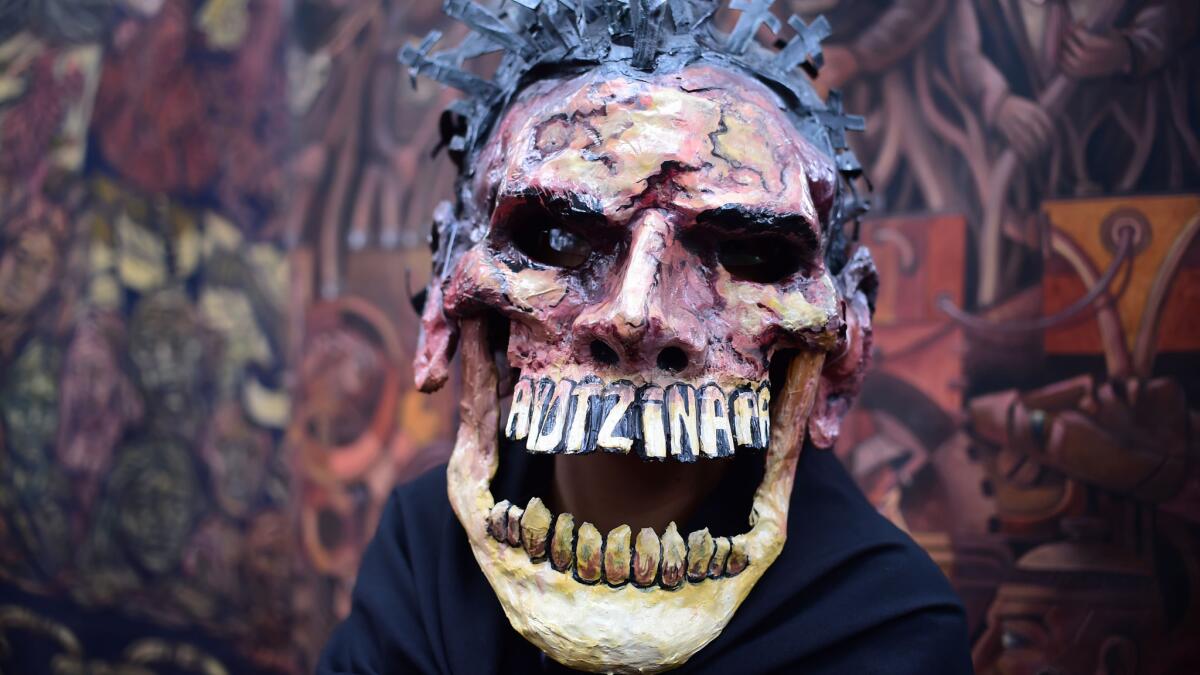
A protester in Mexico City commemorates the first anniversary of the disappearance of the 43 students from Ayotzinapa. Protesters have tackled the issue in striking and original visual ways — such as this figure, clad in a mask crowned with crucifixes.
At the end of last month, citizens in cities around Mexico gathered to commemorate and protest the disappearance of 43 students from a rural teachers college in Ayotzinapa one year ago. In a country wracked by violence, the case of the disappeared students continues to resonate: a story of everyday, working-class Mexicans attempting to make a better life for themselves, who were smothered by drug war violence — that of the government and of the cartels (two purportedly opposing groups who too often appear to be working in tandem).
In this environment, the 43 have become more than just a number, they have become a symbol of everything that is wrong with Mexico’s corrupt ruling classes, a breaking point for a people who have had enough. (For some terrific insight into the case and the way it has affected politics in Mexico, be sure to read journalist and novelist Francisco Goldman’s series in the New Yorker.)
As with protests elsewhere — consider “Umbrella Man,” the icon of last year’s pro-democracy protests in Hong Kong — the Ayotzinapa manifestations in Mexico have inspired a frenzy of art-making: impromptu installations, murals, banners, masks and costumes. These borrow as much from popular culture as they draw from traditions of Mexican folk art.
And altogether, they tell an interesting story: The 43 may be gone, but they will not be forgotten.
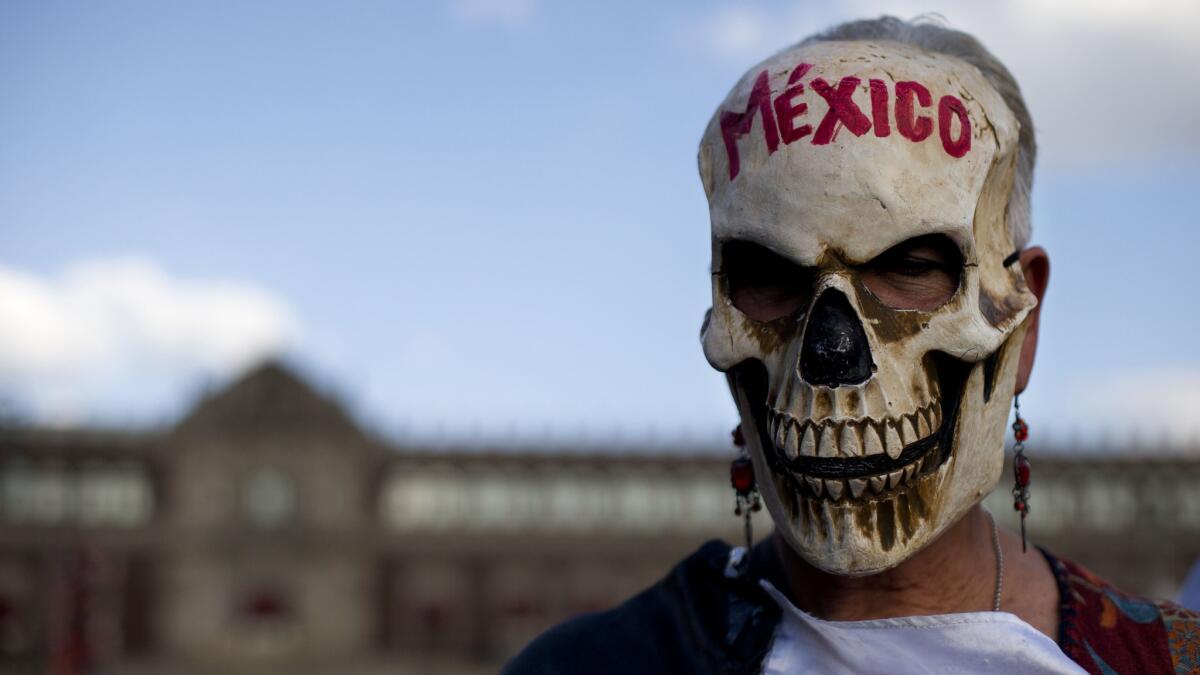
The calavera — or skull — is a common motif in Mexican folk art and it is employed frequently in the Aytozinapa protests. A woman clad in a skull mask stands in front of the National Palace during a rally in the Zocalo, the capital’s main square.
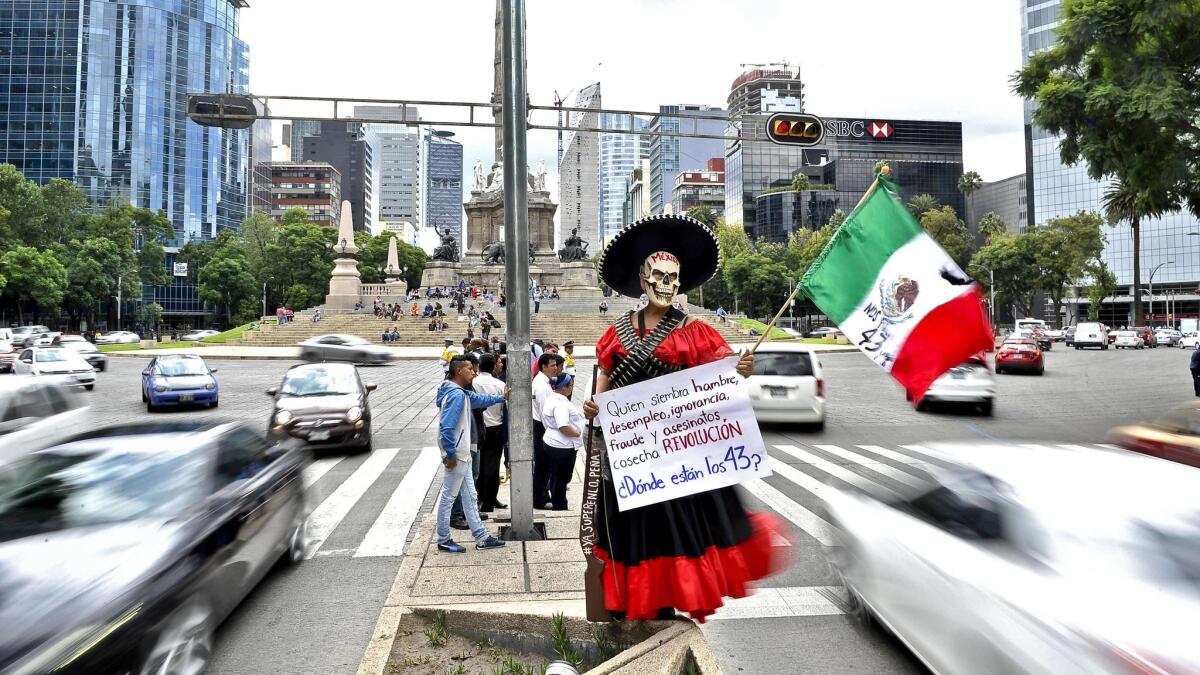
Mexican Revolution-era garb is frequently used as symbol of protest, such as this figure, in Mexico City, dressed as a soldadera, one of the Revolution’s female soldiers. Her sign reads: “He who sows hunger, unemployment, ignorance, fraud and murders, harvests Revolution. Where are the 43?”
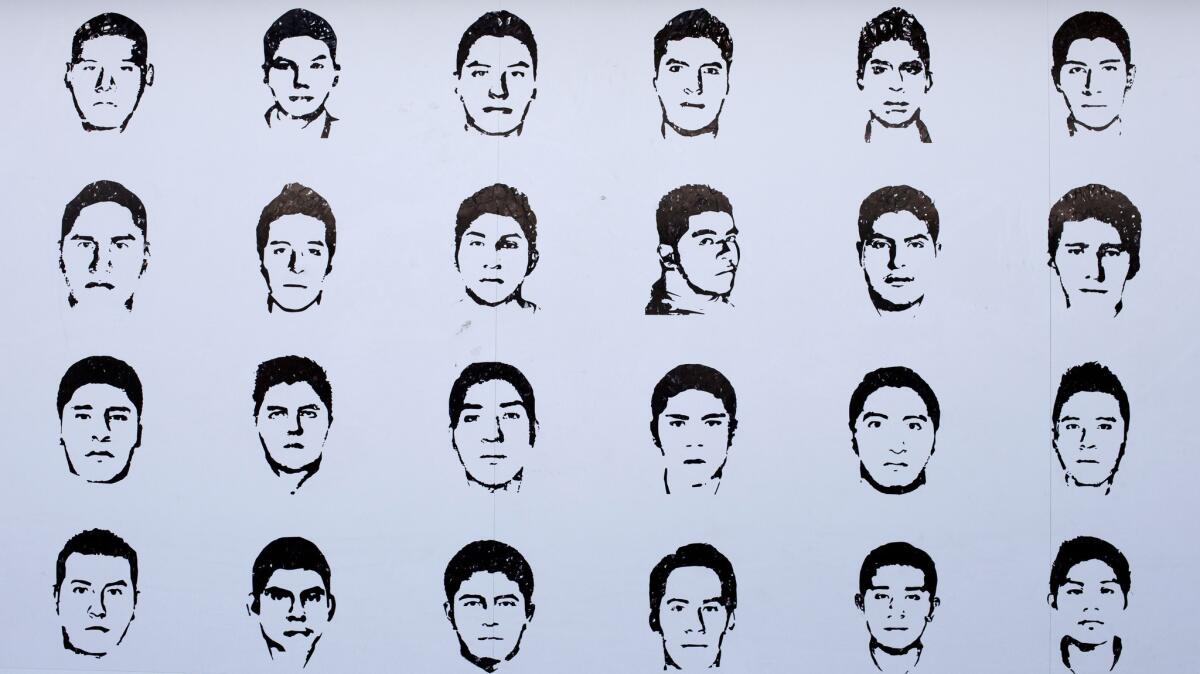
Stencil portraits of some of the missing students are depicted on a billboard erected by Amnesty International at a protest camp inside Mexico City’s main square. Stencilling is a form that dates back hundreds of years, but began to be regularly employed for political purposes during the 20th century.
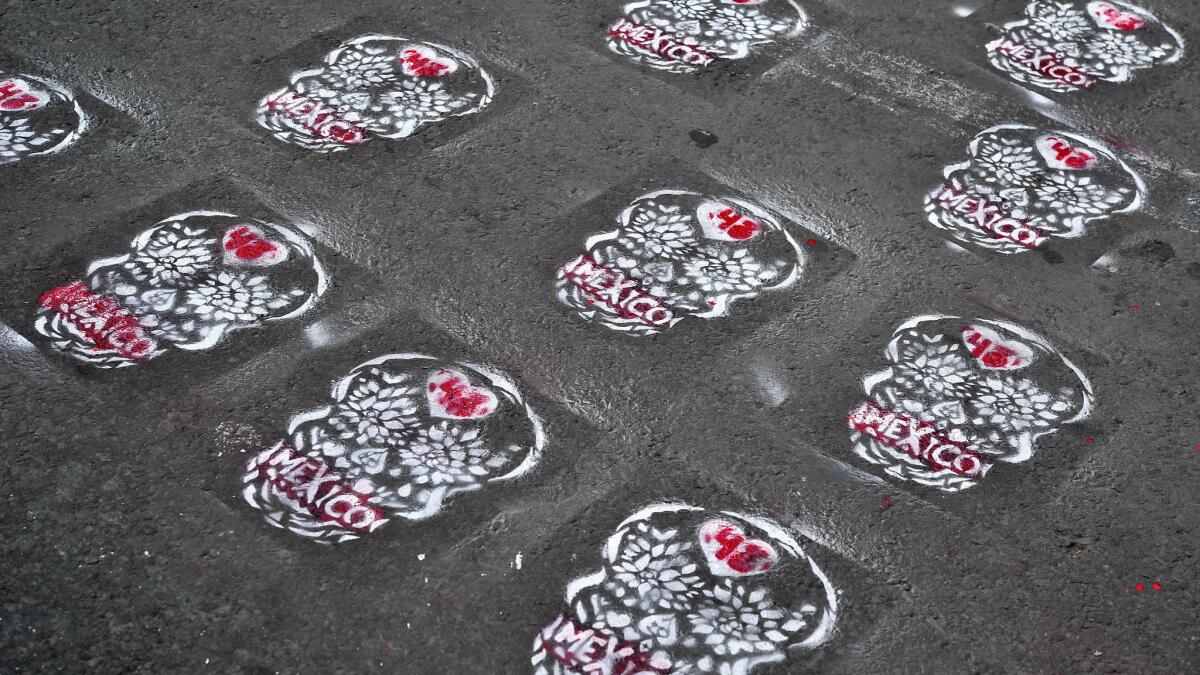
Skull stencils bearing the number 43 line the street in front of the National Palace in Mexico City in late August at a rally in support of the parents of the missing students.
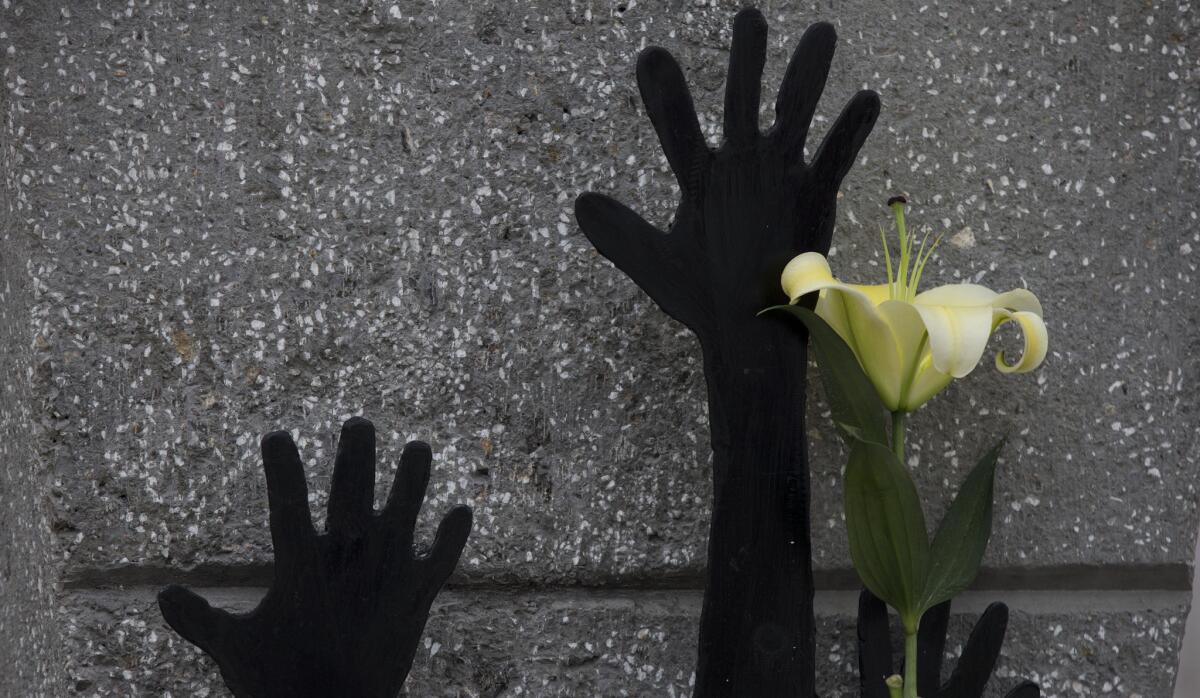
A flower rests next to hands reaching upward on a newly erected monument for students killed on the day 43 others disappeared just over a year ago.
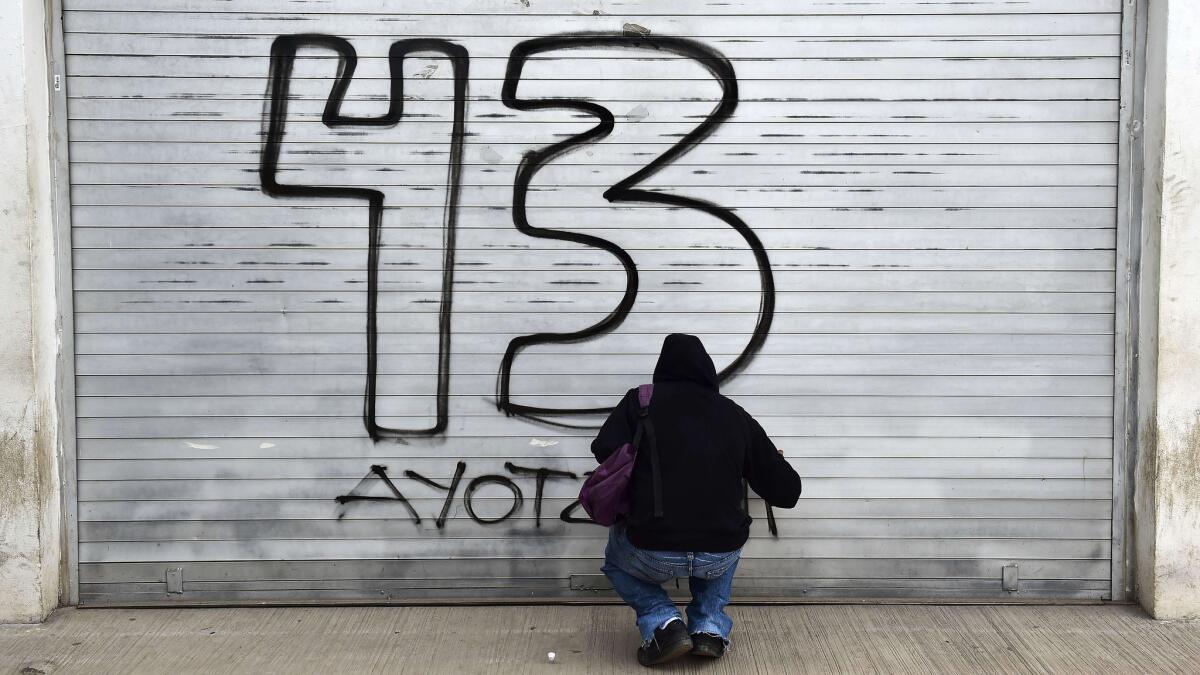
Since the 43 students disappeared, the numeral has become a symbol — of resistance to corruption, violence and a broken justice system. In this image, a masked man sprays a graffito in honor of the 43.
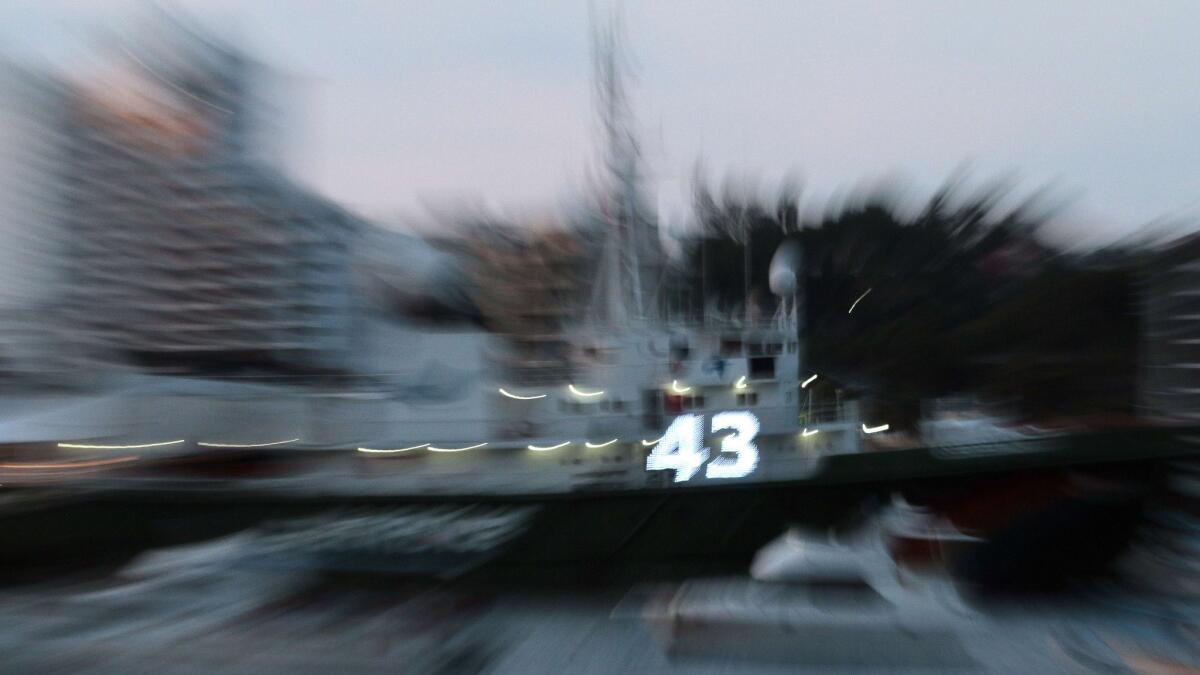
The Greenpeace ship Esperanza is illuminated with the number 43 in Acapulco, in Guerrero state, in early September. Guerrero is the region where the students lived and disappeared.
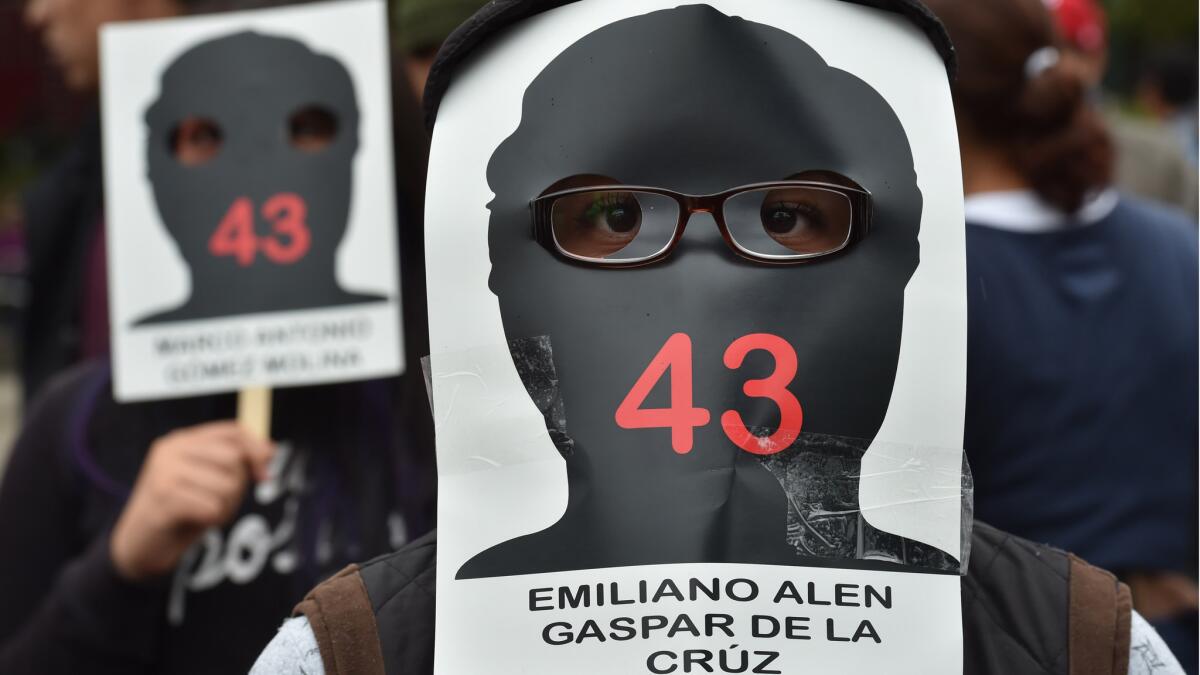
A silhouette with space for eye-holes turns this simple placard into a mask — and every protester at a demonstration in Mexico city last month into one of the missing.
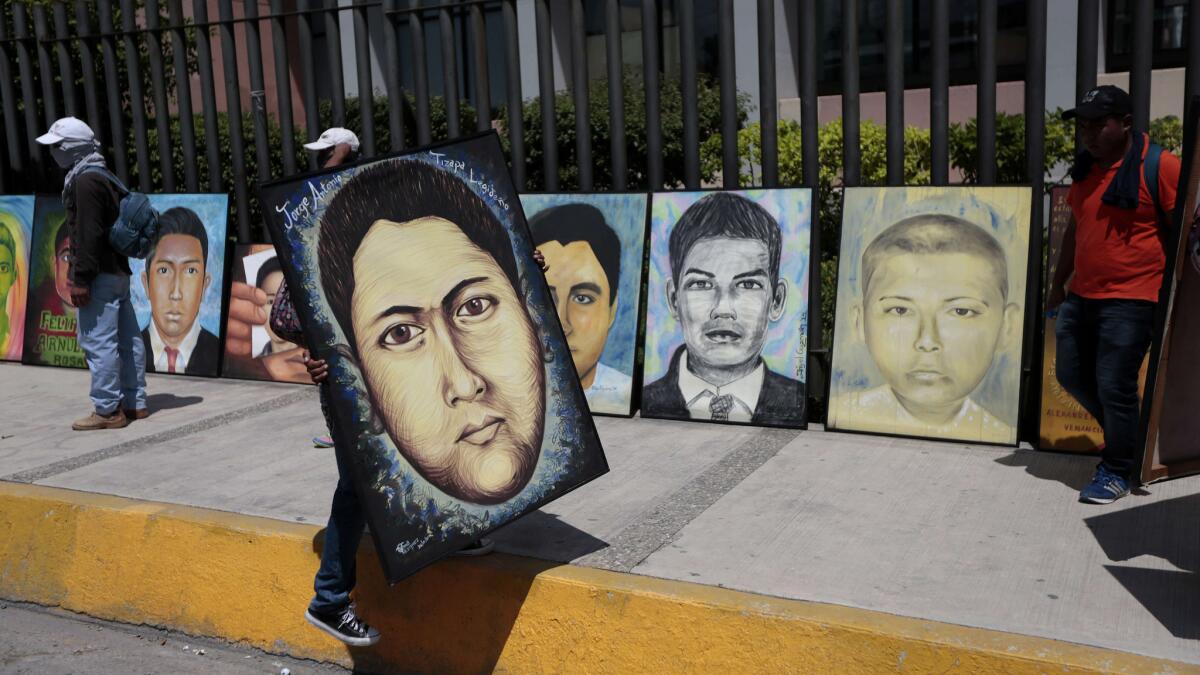
The protests have also generated plenty of paintings — generally portraits of the missing — often executed in a brightly hued folk style. Seen here: portraits of the missing in front of Guerrero’s state assembly, located in the city of Chilpancingo.
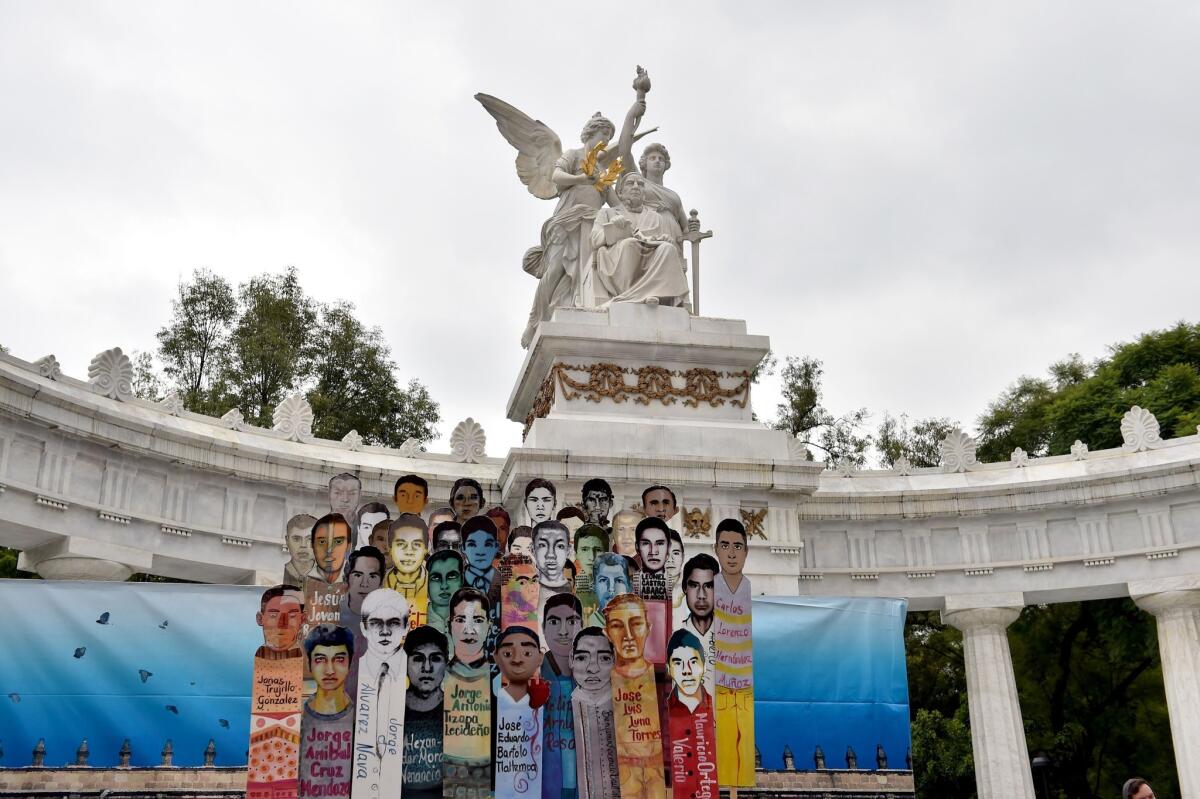
Banners representing the 43 missing students are seen during a protest in Mexico City on Sept. 26. The faces of the 43 have become a broader symbol of everyday Mexicans held hostage to the country’s violence.
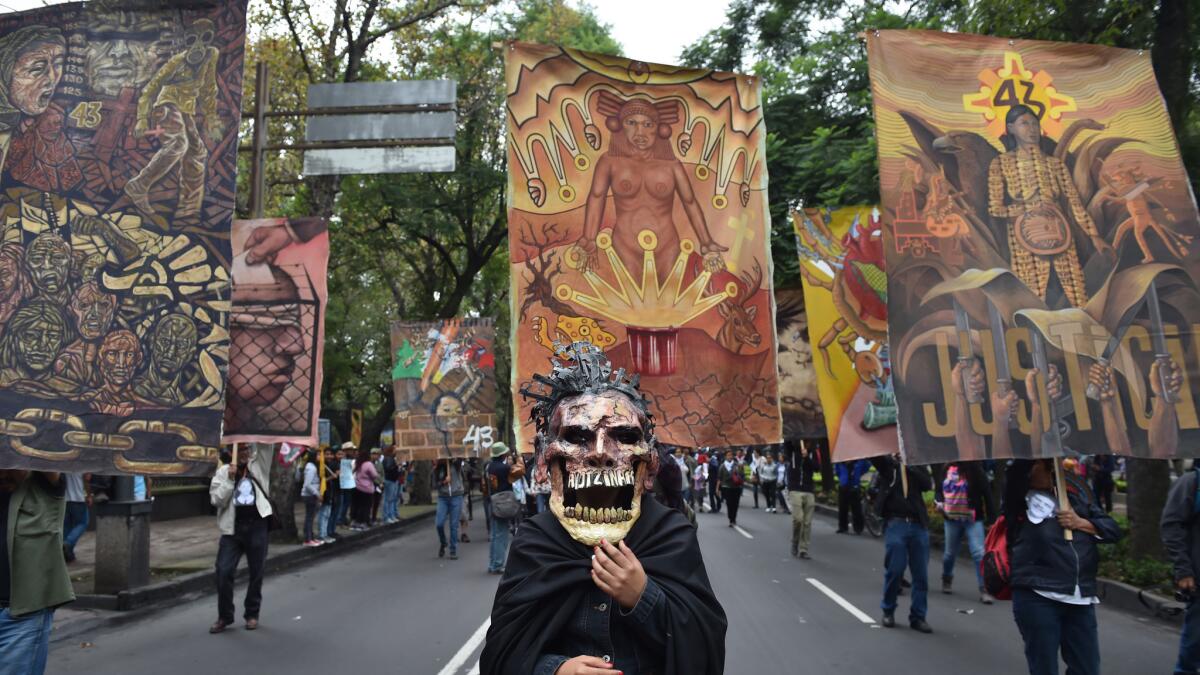
A view of the elaborate Ayotzinapa mask framed by colorful banners that employ indigenous iconography and protest symbols. This image was taken in late September at an anniversary protest in honor of the missing 43.
Find me on Twitter @cmonstah.
